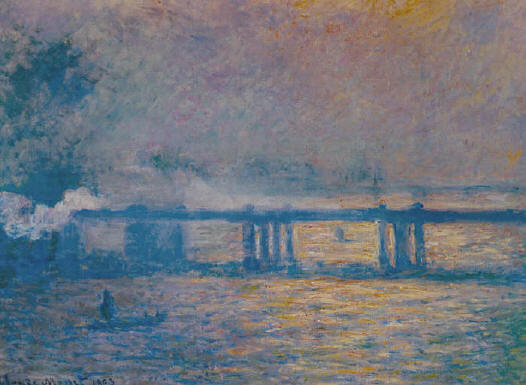Mouvement constitué entre 1860 et 1880 par un groupe
de peintres afin d'organiser des expositions et de promouvoir une technique
picturale rejetée à ses débuts par les "tenants" de l'art officiel.
Leur ténacité finira par soulever l'adhésion du plus grand nombre en faisant
partager leur idées développées à partir des travaux effectués sur la
décomposition de la lumière et débouchant sur une nouvelle vision du monde
qui n'a plus besoin des règles illusionnistes de la perspective et qui
rejette les normes et les contraintes de l'Académie..."
Avec les Impressionnistes, le pont devient un motif privilégié, non plus comme
"sujet" privilégié du tableau, symbole de l'essor industriel de l'époque,
mais surtout, support structuré
de la lumière et des reflets, du point de vue plus formel de la
problématique picturale...
|
Movement made up between 1860 and 1880 by a group of
painters in order to organize exhibitions, and to promote a pictorial
technique rejected at its beginnings by the "holders " of the
official art. Their tenacity will end up raising the
adhesion of the greatest number while making share their ideas developed
starting from the work carried out on the decomposition of the light and leading to a new vision of the world which does not need
more the illusionnists rules of the perspective and which rejects the
standards and the constraints of the Academy...
With the Impressionists, the bridge becomes a privileged motif, either as
privileged "subject" of the picture, (the symbol of the industrial
development), but especially, structured support of the light and glints
from a most formal point of view of the pictorial problem... |
|
Claude Monet
Charring Cross
Bridge, The Thames
1899-1901; Huile sur toile; Musee des Beaux- Arts, Lyon
 |
